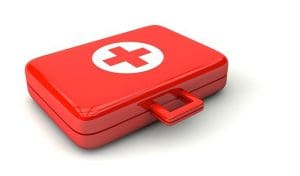 Preparing for an emergency before it happens ensures that plans are in place, equipment is available and ready to use, and personnel are properly trained. Research suggests that American Indian and Alaskan Natives are at higher risk of disaster exposure and are often disproportionally affected. The reported rates of psychological distress, substance abuse and/or dependence are twice as high among American Indian and Alaskan Natives as compared to the general population.
Preparing for an emergency before it happens ensures that plans are in place, equipment is available and ready to use, and personnel are properly trained. Research suggests that American Indian and Alaskan Natives are at higher risk of disaster exposure and are often disproportionally affected. The reported rates of psychological distress, substance abuse and/or dependence are twice as high among American Indian and Alaskan Natives as compared to the general population.
According to the National Indian Health Board, “Planning for, responding to, and recovery from manmade or natural disasters and emergencies in tribal communities can pose unique challenges. The challenges are in part due to lack of resources, complexity around jurisdiction as well as lack of understanding among partners working with tribes. As a result, preparedness and response efforts may differ from efforts outside of Indian Country.”
Public Health Emergency adds that “When coordinating or providing disaster health, behavioral health or medical services, the sovereign political structures and the diverse cultural histories can present challenges. Because of the diversity of cultural characteristics and governmental structures, it is important for those providing disaster-related support to respect the authority of elected and appointed tribal leaders, and their governments, and seek their input and permission before making assumptions regarding what is best for the tribes.”
Ready.gov offers brochures and posters to help American Indian and Alaskan Natives, families and communities prepare for disasters. They are customized by region to reflect the diverse local conditions and cultures found in Alaska and Indian Country.
Partnership With Native Americans, a nonprofit serving immediate needs and supporting long-term solutions for American Indians living in reservation communities, is collaborating with Preparedness Matters to raise awareness about the realities of disaster aid on the reservations and distributing The Native Family Disaster Preparedness Handbook. The handbook provides culturally relevant guidance and tips for reservation-based families and tribes on how to prepare for and respond to disasters.
 A new Capacity-Building Toolkit for including aging and disability networks in emergency planning is also available. This resource guides aging and disability networks to increase their ability to plan for and respond to public health emergencies and disasters. This toolkit helps programs that support older adults and people with disabilities through the emergency planning process of preparedness, response, recovery and mitigation activities.
A new Capacity-Building Toolkit for including aging and disability networks in emergency planning is also available. This resource guides aging and disability networks to increase their ability to plan for and respond to public health emergencies and disasters. This toolkit helps programs that support older adults and people with disabilities through the emergency planning process of preparedness, response, recovery and mitigation activities.
It was written by the National Association of County & City Health Officials and the Association of State and Territorial Health Officials, in partnership with the Office of the Assistant Secretary for Preparedness and Response and the Administration for Community Living.
The toolkit can help organizations of all types conduct more inclusive emergency planning by facilitating personal preparedness for aging adults and people with disabilities. It can also help expand organizational knowledge of the unique challenges these populations face during emergencies. The toolkit can assist emergency managers and public health officials in understanding the capabilities and expertise of community-based organizations within the aging and disability networks.
Leave a Reply